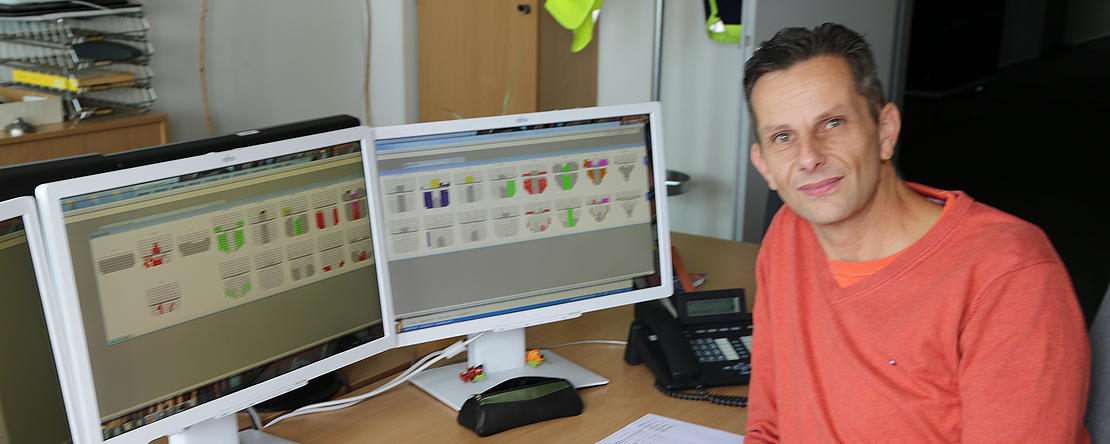
Klaus Stender sits at a long desk with three screens. On each monitor there are small ships, many combinations of numbers and lots of colourful boxes. At first glance, the three screens make a colourful picture and remind one of a game. But what looks colourful is filigree detail work. Klaus Stender has to keep an eye on all three monitors. They depict the long side of a container ship. In addition, several cross-sections of the ship are displayed, as well as container numbers and indications of special cargo.
Klaus Stender is a ship planner and prepares the stowage plan of the container ships even before they arrive at HHLA Container Terminal Burchardkai (CTB) for the respective shift. Every container that needs to be unloaded or loaded is precisely listed and planned by Stender.
850 containers planned for the first ship
Which containers must be taken off board first? Which containers have to be unloaded in which port and where is their optimal place on the ship? Are there containers that contain dangerous goods or need to be refrigerated? These are only a fraction of the questions a ship planner has to ask himself.
"For my first ship, which I prepared alone, I needed seven hours. I planned about 850 containers in the process," says Stender. At the beginning of July, together with nine other HHLA employees, he completed the theoretical part of the training to become a Certified Ship Planner. He successfully passed a structured selection process (sAV). Eight men and two women started the training programme at HHLA at the beginning of May 2015. "Training our own people is therefore an advantage because we already know their strengths and can count on their experience," says Matthias Bartels, Head of Ship Planning at Container Terminal Tollerort (CTT).
A lot of practical experience gained
For six weeks, the prospective ship planners were trained at the maritime competenzcentrum. For another three weeks they received an introduction to the SPARCS planning software from Matthias Barthels at the technical college. Since July, the new ship planners have been in the practical familiarisation phase at their future work locations at the Burchardkai and Tollerort terminals. "I think it is important that the prospective ship planners can gain practical experience," says Barthels.
Anyone who thinks that only navigators have a chance to learn the profession of ship planner is mistaken. Klaus Stender is a familiar face at Burchardkai. He started his career as a sea freight inspector and joined HHLA as a checker in 1991. He later became a van carrier driver at CTB, then a foreman, and has been planning the work programmes for the container gantry cranes on the ship since 2014. He naturally benefits from his many years of experience in port handling. Since May 2015, he has been trained as a ship planner. "I am very happy to be among the ten people selected for this programme," says Stender. "For me, this is a little dream come true."
No classic office job
Denise Köhler feels the same way. The port logistics specialist is one of the two women who are also being trained as ship planners. She has been driving van carriers (VC) at Tollerort for three and a half years. "I like the job of a VC driver. Nevertheless, I wanted to change something and applied for the training as a ship's planner. I would not have thought that I would actually be taken. I am very happy about it," says Köhler.
What she particularly likes about the job is that it is not a classic office job. It is a multifaceted profession. Ship planners work closely with the shipping companies' stowage centres. After each completed planning, the ship planners have to go on the container ships. There they discuss the stowage plan with the 1st officer of the crew. Only when the responsible officer has approved the stowage plan may the ship be loaded.
Denise Köhler's practical training begins in November. "I'm already looking forward to that," she says. Klaus Stender, together with five other new ship planners from Burchardkai, was allowed to travel on a Hamburg Süd container ship from Rotterdam via London to Hamburg in September, gaining experience on board. His induction phase will be completed by the end of the year. "With the training to become a Certified Ship Planner, I have a job that I would like to do until the end of my career at HHLA," says Stender.